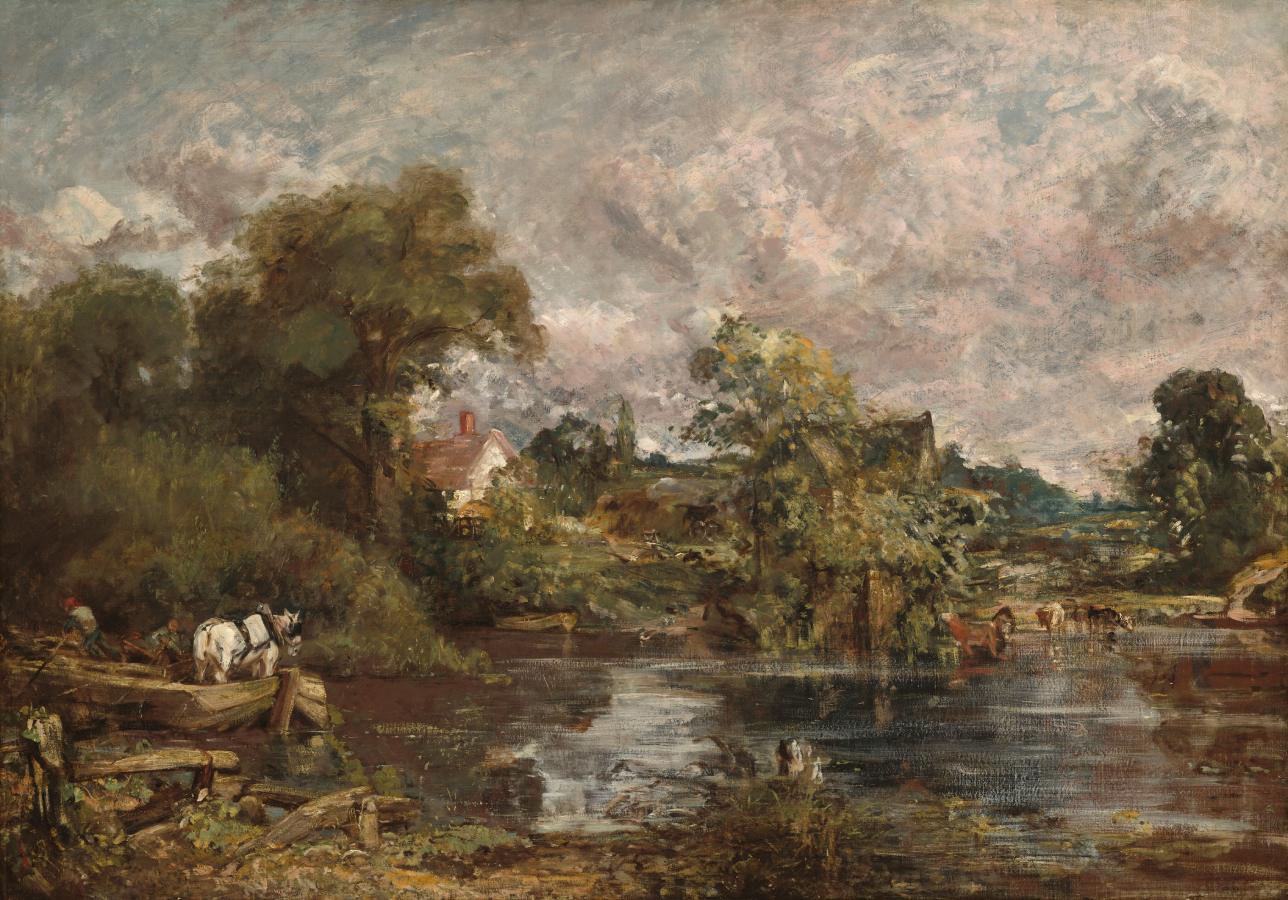Constable, John (1776-1837)
The White Horse
1818–1819
Oil on canvas, 127 x 183 cm
National Gallery of Art, Washington
This six-foot-wide canvas was something new for a 19th-century artist: it’s a sketch the same size as the final painting (now in the Frick Collection in New York). Constable’s earlier works were smaller, and other artists’ large landscapes often overshadowed them in exhibitions. In response, he made The White Horse bigger than any of his previous paintings. In it, a barge carries a white horse across the Stour River (in Suffolk, England) to its tow path on the other bank. To achieve this new and unfamiliar scale, Constable first painted a “full-sized sketch.” He formed the overall composition using broad brushstrokes without including details. Constable found this process so helpful that he continued it for the rest of his career. From a grassy riverbank, we look across the placid surface of a river lined along the far bank with trees and farm animals in this horizontal landscape painting. The scene is painted loosely with brushstrokes visible throughout, so some details are difficult to make out. For the surface of the river, russet-brown and steel-gray paint skims lightly across the canvas and leaves some unpainted areas visible, creating the effect of light shimmering on the still water. On our left, a shallow wooden barge is propelled along the stream by two men in red caps with long poles. The boat carries a white horse wearing blinders and a harness. The riverbank beyond is lined with pale, sage-green grass tinged with gold, growing in front of a tangle of darker green trees and bushes. Across the water from us near the middle of the picture, a small rowboat sits in the shallows at the foot of a steep riverbank. Above, a white cottage with a reddish roof and chimney is tucked behind the trees, with a wooden rack full of hay next to it. Nearby, a plow and wheeled cart, highlighted with strokes of white, sit near more mounds of hay. Rocky fields reach into the distance. The vista is blocked to our right by another clump of trees and a rocky outcropping, rising from the stream, to our right of center. The steep, dark roof of a farmhouse is barely visible among the trees. Along the riverside to our right, a small group of cinnamon-brown and cream-white cows stand at water’s edge. A rolling pasture stretches behind them to meet blue hills in the distance. Above, in the upper third of the painting, mottled white, pale rose, and gray clouds rolling across a steel-gray sky are reflected in the water below. (NGA)
